Posted on
April 11, 2014 by
Martin Banks
The Masters Tournament is held every year at the Augusta National Golf Club in Augusta, Ga. Originally established in 1934, the tournament has become perhaps the most renowned on the PGA Tour because of the history and traditions that are associated with it. Organizers have reshaped and redesigned the course over the years, but these traditions remain and will continue to do so well into the future.
Green Jacket
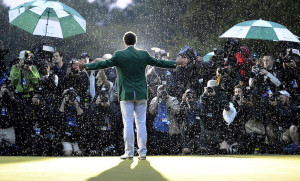
Since 1949, the winner of the Masters has been awarded a green jacket. This golfer is only permitted to keep the jacket until the following year’s tournament, at which time it must be returned to the clubhouse. Past champions are allowed to wear the green jacket that they have won whenever they return to the golf course, but should never wear it anywhere else.
Read the rest of this entry →
Tags: GolfGreen JacketMastersTraditions
Category
Golf, Scott Huntington
Posted on
April 08, 2014 by
Martin Banks
The news that Johnny Manziel has recently been on a two-day visit with the Oakland Raiders has raised some eyebrows around the NFL. It has also brought back memories of some of the Raiders’ terrible first-round draft picks. And with the likes of JaMarcus Russell in Oakland’s recent history, it’s easy to wonder if Johnny Football with be the Raiders’ next big bust. No matter what happens with Manziel, Oakland won’t be rid of its terrible draft record anytime soon, so let’s look at who the Raiders picked first over the last ten drafts and who they looked over.
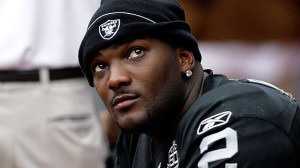
2013: D.J. Hayden
Although it’s far too early to decide what sort of player Hayden will ultimately turn out to be, it’s worth noting that he is one of only three players on an NFL roster out of the eight first-round picks that the Raiders have had over the past ten years. Another note that may be of importance is that Sheldon Richardson was taken directly after Hayden. Richardson’s impressive rookie campaign points in the direction of potential dominance in the future, but we’ll just have to wait and see.
Read the rest of this entry →
Tags: Draft bustsJaMarcus RussellNFLraiders
Category
NFL, Scott Huntington, Sports History
Posted on
April 02, 2014 by
Martin Banks
Tailgating has become such an integral part of American sports that it’s hard to imagine a time without hours of grilling, drinking and socializing before a game. Nowadays, tailgating is prevalent in nearly every major sporting event, but it wasn’t always a foregone conclusion that fans would meet and party before every match, game or contest. Tailgating has come a long way from its inception: pioneers of the act led the way to portable grills, booming stereos, cold beer and casual games. So let’s look at how tailgating came about and how it has become so popular.
First Instance
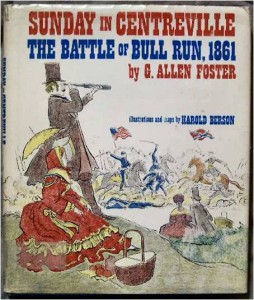 Believe it or not, tailgating didn’t have anything to do with sports in the very beginning. In fact, the first-known instance of tailgating occurred during a much more serious event in American history than any football or baseball game. In 1861, the Battle of Bull Run marked an historical event in both the Civil War and the act of tailgating. Onlookers enjoyed picnic-style meals while cheering on soldiers during the battle. This marked the inaugural tailgate party, however strange it may seem.
Believe it or not, tailgating didn’t have anything to do with sports in the very beginning. In fact, the first-known instance of tailgating occurred during a much more serious event in American history than any football or baseball game. In 1861, the Battle of Bull Run marked an historical event in both the Civil War and the act of tailgating. Onlookers enjoyed picnic-style meals while cheering on soldiers during the battle. This marked the inaugural tailgate party, however strange it may seem.
Read the rest of this entry →
Tags: chuck wagonhistory of tailgatingsports historyTailgating
Category
Scott Huntington, Sports History
Posted on
March 26, 2014 by
Martin Banks
By taking a look at March Madness and the way college basketball teams advance through the tournament, it’s easy to see how valuable an elite shot blocker can be. Protectors of the rim have always been an important part of the college game and have been some of the best players in the history of the sport. Unfortunately, the blocked shot didn’t become a statistic until the ‘80s, so greats like Bill Russell and Wilt Chamberlain couldn’t leave their mark completely. However, the last 30 years or so have given us plenty of great shot blockers. Here are the best of the best.
Hakeem Olajuwon
Olajuwon was easily one of the most dominating forces college basketball has ever seen. His defensive prowess led the Houston Cougars to the Final Four in each of his three seasons playing for the school. Had he stayed for a fourth year, Olajuwon would almost certainly be the all-time leader in blocks. He totaled 454 rejections with an average of 6.61 blocks per 40 minutes.
David Robinson
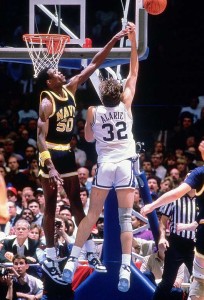
Known as the Admiral, Robinson is one of the best shot blockers of all time, which is all the more impressive considering he didn’t start playing basketball until his final year of high school. Robinson recorded a total of 516 blocks in his four-year college career at Navy, averaging 5.55 blocks per 40 minutes. Robinson is one of only six players to block at least 14 shots in a single game and he holds the record for blocked shots in a season with 207. His knack for rejecting shots earned Robinson both the Naismith and Wooden Player of the Year awards.
Read the rest of this entry →
Tags: College Basketballhistoryshot blockers
Category
Basketball, College Basketball, Scott Huntington, Sports History
Posted on
March 19, 2014 by
Martin Banks
What comes to mind when you think of California? The answer for me is beaches and sports. With a great history of teams, from the Lakers to the 49ers to USC and more, California is a land of athletes. But which greats were actually born in California? Whether you are talking about football, baseball, tennis or nearly any other sport, California has been the birthplace of some legendary athletes. And with much difficulty in cutting down what could be a humongous list, here are the best California-born athletes in the history of modern sports.
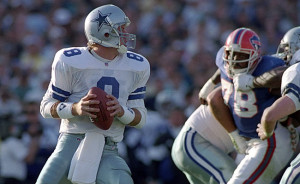
Baseball
Whether or not you include the likes of Barry Bonds on this list, there are plenty of legends born in California on the baseball diamond.
With a lifetime batting average of .339, Tony Gwynn is a California great from Los Angeles. He was elected into the Hall of Fame in 2007 after a career including over 3,000 hits, 15 All-Star selections and five Gold Gloves. Read the rest of this entry →
Category
Scott Huntington, Sports History
Posted on
March 11, 2014 by
Martin Banks
As one of the stories of the year, the Wichita State Shockers have gone undefeated in the regular season of their college basketball season. After making it to the Final Four the NCAA Men’s Basketball Tournament last year and earning a record of 34-0 this season, the Wichita St. basketball team is now where they have rarely been—in the limelight of sports prominence. For the casual sports fan, the Shockers have not often come to mind when it comes to choosing a winner for their March Madness brackets. However, Wichita St. basketball has come a long way since its beginning, starting under the name Fairmount College.
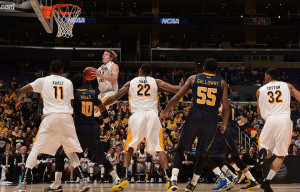
The Beginning of Shockers Basketball
Under the original name of the “Wheatshockers”, the Fairmount College basketball team competed in its first season in 1906. Head coach Willis Bates and his six players finished the season 2-4. You don’t need medical translation to know that going 2-4 isn’t the best start to a program, but Fairmount College would eventually make strides forward, including the development of the full-court zone press under Coach Gene Johnson.
[poll id=”264″]
Start of Success
The Shockers would begin to see success after joining the Missouri Valley Conference, when the school hired Ralph Miller from East High in 1951. Miller convinced his star player in high school, Cleo Littleton, to come with him to the college. Littleton became one of the first African-American players in the Missouri Valley Conference. He was also the first to score 19 points per game as a freshman—a school record that stands today. Under Miller in the 1964, Dave Stallworth would become the Shockers’ first consensus all-American, scoring a career average 24.2 points per game. Miller would later be inducted into Naismith Basketball Hall of Fame after building the Shockers’ basketball program.
Wichita State’s First Great Season
In the season following the school’s induction into the state university system as Wichita State University, the Shockers would go 19-7 and win the Missouri Valley Conference in the 1964-65 season under Gary Thompson. In the NCAA tournament of that season, Wichita St. would defeat SMU and Oklahoma St. in order to earn a berth into the Final Four—an accomplishment tied for the school’s deepest-ever run in the tournament. In their Final Four matchup, Wichita St. would lose to defending national champs UCLA Bruins by a score of 108-89.
One More Run Before Insignificance
11 years after Wichita St.’s greatest season at that point, the Shockers would win their next Missouri Valley Conference title. With one of the school’s best-assembled teams, including freshman-phenom Cheese Johnson, the 1975-76 Shockers returned to the NCAA tournament. A heart-breaking loss by one point to Michigan—the eventual runners-up—in the first game of the tournament would then be followed by the Shockers’ Elite 8 season in 1981 in which Wichita St. defeated Kansas. The Shockers would subsequently go through a period of mediocrity through the 1990s.
Return of the Shockers
Under new Athletic Director Jim Schaus, Wichita St. would begin to see success again in the 2000s. The hiring of coach Mark Turgeon would prove advantageous as he brought the team to three consecutive 20-win seasons and the school’s first conference championship in 23 years. The program has continued to gain momentum as the Shockers won the NIT tournament in 2011 and reached the Final Four of the NCAA tournament last season. Now, Wichita St. is poised to make a deep run in the tournament with the likelihood of a one seed and the confidence that only an undefeated season can give you.
Tags: College BasketballMarch MadnessNCAAShockersWichita State
Category
College Basketball, Scott Huntington, Sports History





